Exploring the Date Groves with Natural Delights
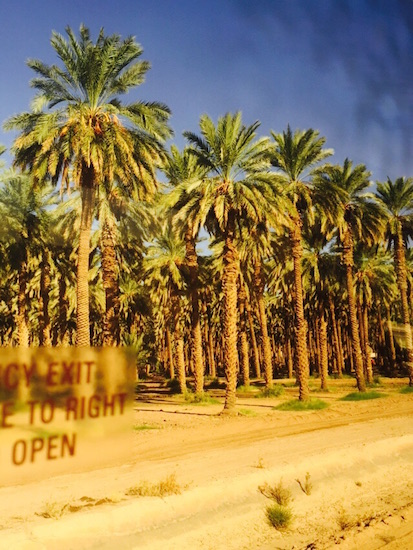
I was recently given the unique opportunity to attend the 2015 Natural Delights Medjool Date Blogger Summit in Yuma, Arizona– and what an experience that was.
It was one of the most unique places geographically that I’ve ever been, and on the food and agricultural side, one of the most interesting and mesmerizing due to the sheer size of the trees and the story of how they were planted and grown there (more on that in a minute).

There are over 30 date varieties but the most common are the Deglet and the Medjool. Medjool dates is the variety grown here and the climate and geography couldn’t be more perfect, subhanAllah. The Medjool provide a natural sugar that your body recognizes, which is probably why they’re so effective to eat after a long day of fasting in Ramadan or other times of the year when they slowly raise your body’s blood sugar levels without over-doing it.
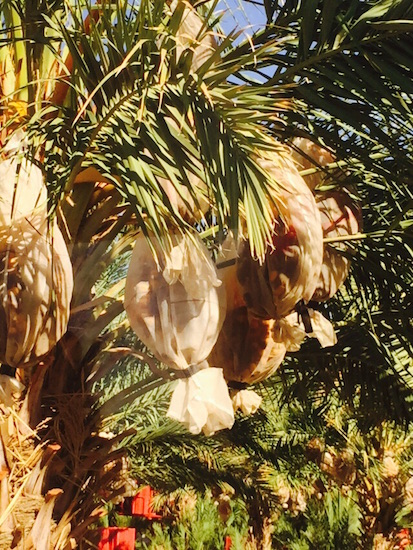 At the time of the trip, the dates were ready to be harvested. Of all the places around California, Arizona and even Morocco where I’ve been, I’ve never quite experienced the harvesting process like I did here. Most of the time the dates are just low hanging fruits or they are falling from the trees and onto the pavement or ground along the streets. Obviously in a controlled environment where the dates are grown for processing, the fruit has to be collected and these bags that you see (above) are how they begin to do that.
At the time of the trip, the dates were ready to be harvested. Of all the places around California, Arizona and even Morocco where I’ve been, I’ve never quite experienced the harvesting process like I did here. Most of the time the dates are just low hanging fruits or they are falling from the trees and onto the pavement or ground along the streets. Obviously in a controlled environment where the dates are grown for processing, the fruit has to be collected and these bags that you see (above) are how they begin to do that. 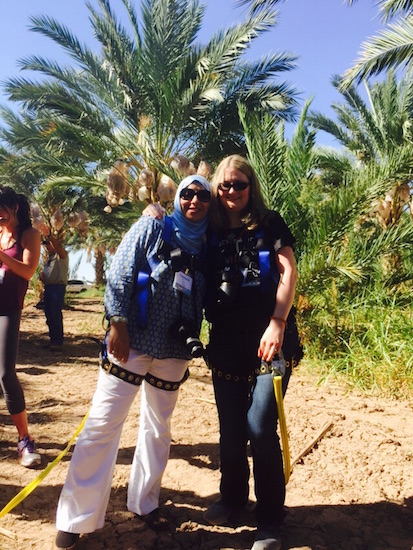 Here’s me and my friend and fellow blogger JoAnn MacDonald of Woman in Real Life getting geared up to go up and into the trees so that we could try our hand at harvesting. Next, we’re lifted up and into the trees to open up the bags and let out the ripened dates– now those tasted absolutely incredible. Silky soft and delicious.
Here’s me and my friend and fellow blogger JoAnn MacDonald of Woman in Real Life getting geared up to go up and into the trees so that we could try our hand at harvesting. Next, we’re lifted up and into the trees to open up the bags and let out the ripened dates– now those tasted absolutely incredible. Silky soft and delicious. 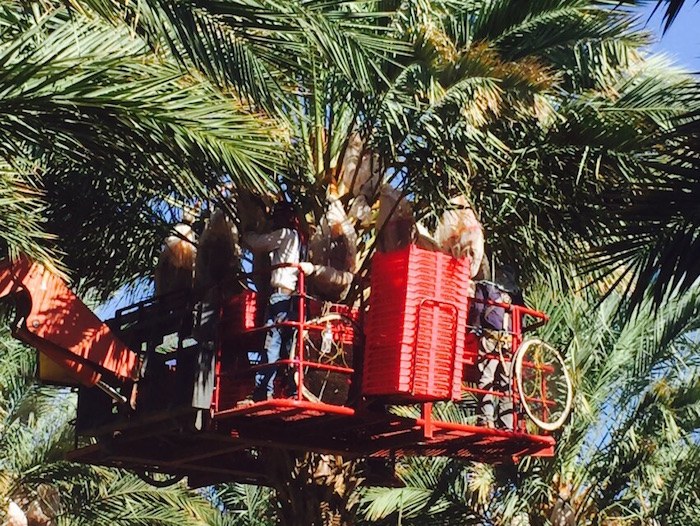 And these trees are so tall and majestic. I’m sure most people know that, but once you stand underneath one, you can really grasp the sheer magnitude of their size.
And these trees are so tall and majestic. I’m sure most people know that, but once you stand underneath one, you can really grasp the sheer magnitude of their size. 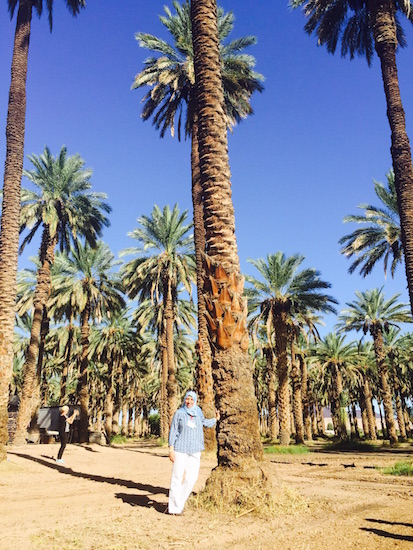 Here in Yuma where there are thousands of acres of groves, the trees are offshoots of palms originally coming from Morocco in the 1940’s. The trees were diseased and the Moroccan government asked if growers in the US would try and save a healthy species by propagation here. They were originally planted in Nevada since Arizona or California wouldn’t take them since they could infect other plants there. Once they were strong enough and disease-free they were eventually moved to Yuma (Bard Valley) where they began to thrive.
Here in Yuma where there are thousands of acres of groves, the trees are offshoots of palms originally coming from Morocco in the 1940’s. The trees were diseased and the Moroccan government asked if growers in the US would try and save a healthy species by propagation here. They were originally planted in Nevada since Arizona or California wouldn’t take them since they could infect other plants there. Once they were strong enough and disease-free they were eventually moved to Yuma (Bard Valley) where they began to thrive. 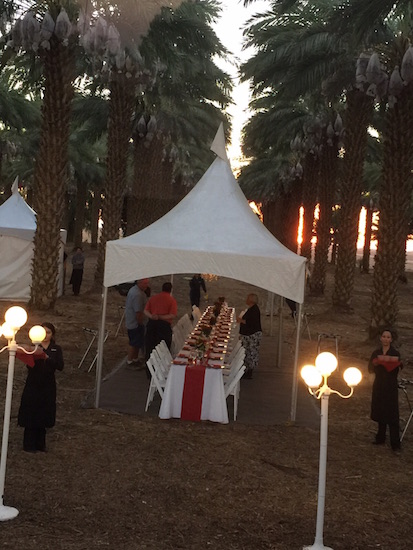 We had lunch and dinner with the various growers of these dates on several occasions which were great opportunities to learn more about their individual and collective passion for growing and harvesting the fruits. Just about every dish we ate had dates in it- from our drinks…
We had lunch and dinner with the various growers of these dates on several occasions which were great opportunities to learn more about their individual and collective passion for growing and harvesting the fruits. Just about every dish we ate had dates in it- from our drinks…
A photo posted by Yvonne Maffei (@myhalalkitchen) on
to desserts…
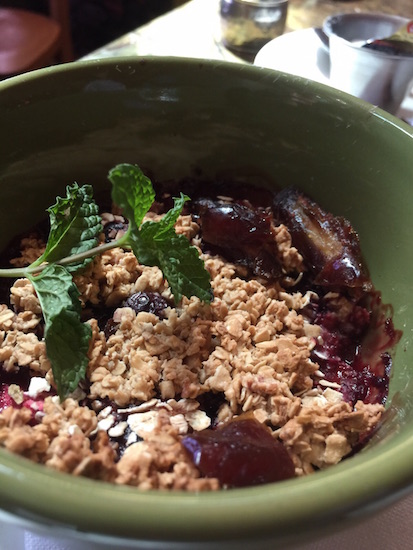
To the gourmet salads at dinner…
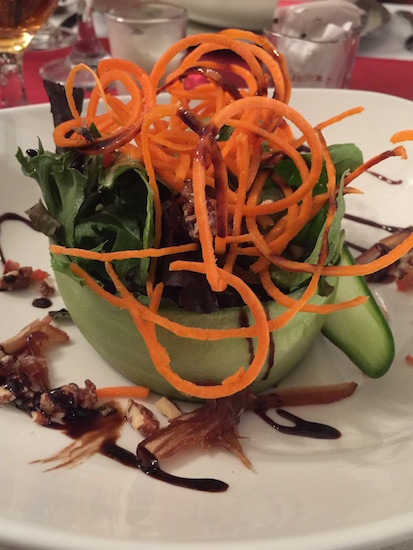
I personally learned a lot from them on the agricultural side of the things, which grew my appreciation for the trees and their fruits that I’ve already loved without a doubt- for example, in the Bard Valley where the dates of Natural Delights come from, there is no need for pesticides because the trees don’t really have any predators that eat away at the fruits. The fruits are so high up into the trees that the risk for losing the fruit is low, therefore they never have to spray with any chemicals in or around the groves. Some of the dates are labeled as organic due to the certification they’ve received, but the rest of the groves are also pesticide-free (and non-GMO, halal and kosher-certified).
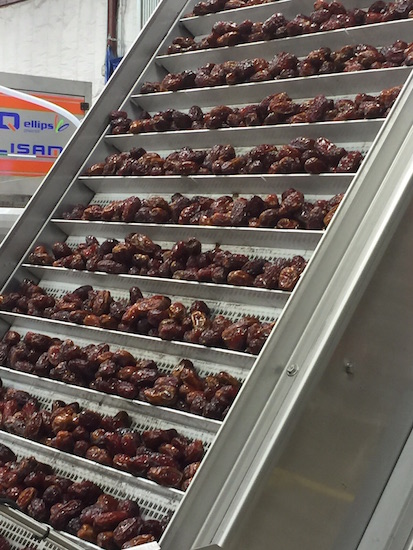
We were also given a tour of the processing facility, which was great (you can see more photos and video of this on my Instagram feed). It was interesting to see how the fruit is plucked from the trees, washed and then packaged beautifully and tightly into those red or green or yellow labeled boxes you find at places like The Fresh Market, which is where I get mine at home. The dates are a fresh fruit, not dried, so they are merchandised at room temperature. They can last up to six months in the fridge and when you freeze them (which is a great way to preserve them), they do not become rock solid. If you start to see any white stripes or dots on the fruit, it’s most likely not anything harmful like mold, but just the natural sugars coming out of the fruit.
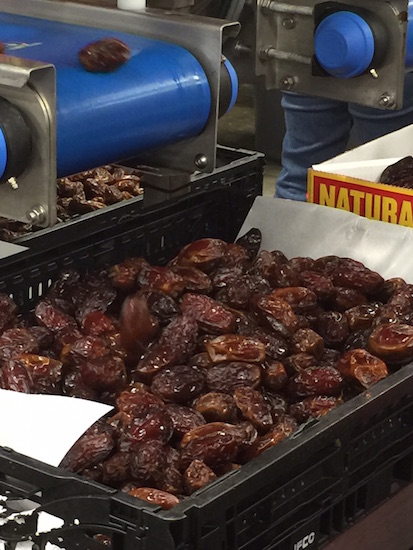
Even on my way out of Yuma back to Phoenix, there are beautiful spots to stop and look at the majestic palms, however Yuma is unique in it’s organized way of growing and harvesting the dates but also in its valuable collection of growers who are dedicated to bringing the best quality dates to consumers. They’ve always been a favorite of mine, I just never knew who grew them or where they came from, particularly in the United States.
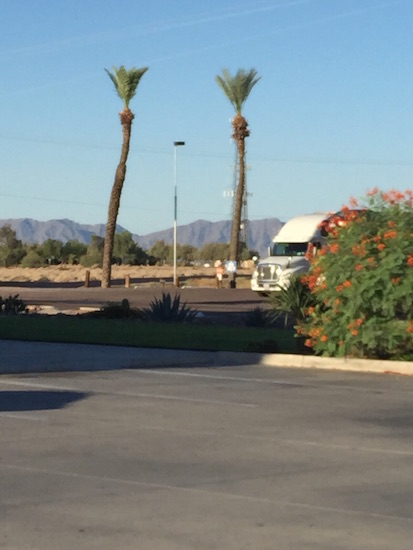
Special thanks to Beth Atkinson and her wonderful team for organizing one of the best blogger events I’ve ever visited.
They took great care of us and made sure the experience was awesome- educational, fun and interesting. I had a blast!
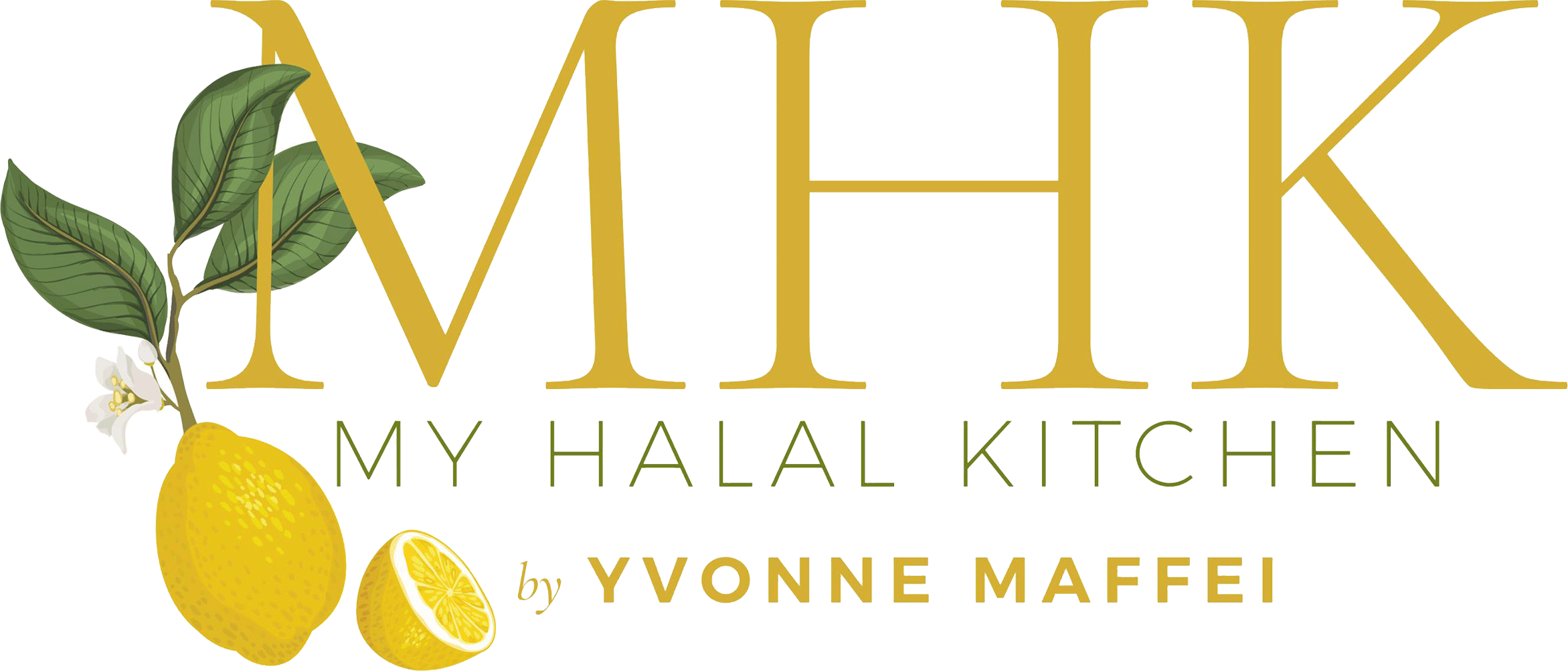

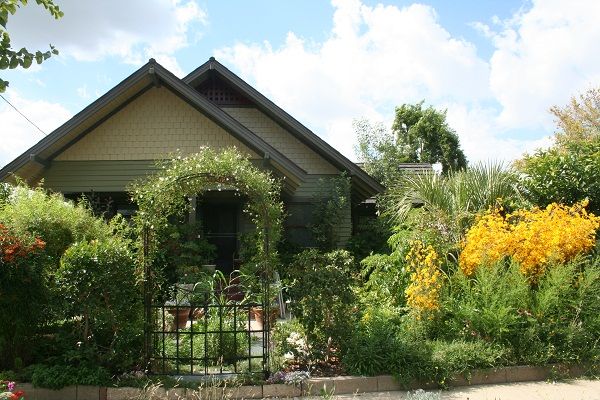





This brings back great memories Yvonne. I had so much fun with you. And now I want to eat more dates… 😉 Jo